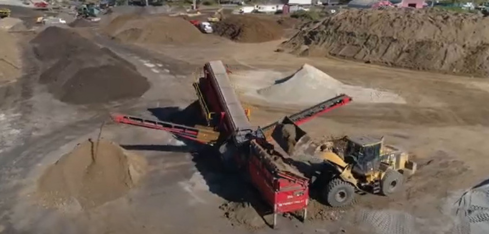Learn about your legal obligations, and how to minimise the risk of spreading fire ants when working with mulch, manure, and quarry products.

The Biosecurity Regulation 2016 details a series of steps you must follow when working with processed materials originating from within Queensland’s fire ant biosecurity zones:
Processed materials include mulch, manure, and quarry products (e.g. gravel, fines, sand and crusher dust).
Keep a written record of the steps you take to ensure the material is produced, processed and stored correctly. Include details about chemical treatments and/or disturbance activities. Keep these records for a minimum of 2 years.
You should also check your property monthly for fire ants, paying special attention to organic material storage areas. This can be done in conjunction with existing property maintenance.
For further information, complete our online fire ant training or contact our compliance team on 13 25 23.
Processed materials training video
Storing processed materials

Storing processed materials appropriately, such as mulch, manure, and quarry products, is a simple measure to further reduce the risk of fire ant infestation in processed materials.
If materials are to remain on the property for more than 24 hours, you must use the following storage options:
- off-ground and covered with an effective barrier that prevents alates (flying fire ant queens) from settling in the materials
- on-ground:
- covered with an effective barrier that prevents alates from settling in the materials
- stored on a fire ant resistant surface surrounded by a 30cm wide perimeter treatment using an approved chemical product.
and
The role of the perimeter treatment and fire ant resistant surface is to prevent fire ant queens from crawling into the processed materials.
Storing off-ground
Processed materials can be stored off-ground on a trailer and either covered with a tarp or placed inside a shed.
Chemical treatment is not required if storing processed materials off-ground.
Storing materials on pallets is not considered off-ground storage. Material can easily fall through gaps and form a 'bridge', potentially allowing fire ants to infest the materials. If you want to use pallets, you may do so, but you must follow the recommendations for on-ground storage.
Storing on-ground
Processed materials can be stored on a fire ant resistant surface. Some examples of fire ant resistant surfaces include:
- concrete or bitumen (with no cracks)
- a barrier that fire ants cannot penetrate (e.g. 200 micron unperforated continuous plastic sheeting)
- compacted ground (other than sand) that has been treated with an appropriate chemical product before materials are stored.
You must apply a chemical treatment correctly if using on-ground storage. If the material will be stored:
- on a fire ant-resistant surface (as above), apply a 30cm wide perimeter around the storage area
- on compacted ground, the entire ground surface must be treated.
The Australian Pesticides and Veterinary Medicines Authority (APVMA) has approved the use of bifenthrin for the protection of storage areas (PER14317). This permit expires on 29 February 2024.
Insecticides must be used under the conditions of the APVMA permit, the safety data sheet (SDS) and in conjunction with the product's label.
Alternatively, you can vigorously disturb any stockpiles every 21 days and 24 hours prior to moving the material to another location. Activities to disturb mulch, manure or processed materials include any combination of crushing, screening, hoisting or washing.
Moving processed materials
You can move mulch, manure, and quarry products within, across, or outside the fire ant biosecurity zones if you do any of the following:
- transport material from zone 1 to a waste facility in zone 1 or 2
- transport material from zone 2 directly to a waste facility in zone 2 only
- move the material within 24 hours of it arriving at the original place
- follow the material storing steps outlined above.
You can also use our material movement advice tool to find out what rules apply to you and your situation.
If cannot comply with these conditions then you must not move the material unless you are granted a biosecurity instrument permit.

